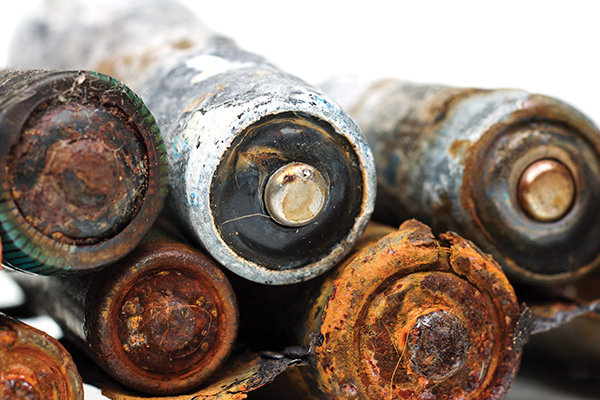John Gertsakis, Director of Communications at Equilibrium, discusses the vital factors required to progress electronics product stewardship outcomes in Australia.
Electronic goods now permeate our existence – how we work, live and play. They are often essential devices that bring high utility, safety and noteworthy functional benefit. They’re also a great source of leisure and recreation. However, there is also a downside.
Electrical and electronic products continue to be scrutinised when it comes to their environmental impact and the consumption of scarce and non-renewable resources, including a variety of precious metals.
The rate of proliferation of devices is breathtaking. Ericsson’s 2016 Mobility report forecasts 28 billion connected devices by 2020, and this fails to account for a diverse range of other non-network connected products such as power-tools, many domestic appliances and various other battery-powered electronic products.
The recently released 2017 Greenpeace Guide to Greener Electronics argues that “billions of electronics are being made, sold and disposed of every year in a cycle that drives short-term profits for electronics manufacturers, but at too high a cost for the planet we all share.”
“There is no question that smartphones, PCs, and other computing devices have changed the world and our day-to-day lives in incredible ways. But behind this innovative 21st-century technology lie supply chain and manufacturing processes still reliant on 19th-century sources of energy, dangerous mining practices, hazardous chemicals, and poorly designed products that drive consumption of the Earth’s resources,” according to the Greenpeace report.
In a similar vein, the award-winning feature-length documentary Death by Design investigates the cost of our digital dependency as it explores “A global story of damaged lives, environmental destruction and devices that are designed to die.”
The theme is obvious: that the production and consumption of electronics is resulting in various social and environmental impacts that are not being adequately addressed. Business as usual approaches are not securing the confidence of non-government organisations, community organisations and many governments, as evidenced by Victoria’s proposed e-waste to landfill ban.
Towards a circular future for electronics
While the language is emotive, the imagery is confronting and the claims are disturbing, change and improvement is possible. Much can be done to shift our patterns of consumption into a more regenerative and restorative mode of operation.
Australia’s Wealth from Waste Research Cluster is one example of where we are leading the way in more carefully identifying opportunities for the ‘circular economy of metals’. Their findings are noteworthy and insights are timely and relevant. The cluster is an international collaboration of researchers from the University of Technology Sydney, Monash University, The University of Queensland, Swinburne University of Technology, Yale University and CSIRO.
“The Wealth from Waste Cluster research starts from the premise that Australia’s role as a global leader in primary production of minerals and metals must anticipate and adapt to the implications of the future economy where new wealth is created by redesigning for circular flows of resources. In a circular world, waste is treated as a valuable resource,” the cluster’s recently released report says.
In terms of dealing with electronics sustainability, an important component of the cluster’s research program involved the appraisal of key policy levers, including product stewardship approaches, to support successful recycling and collection systems.
The research outcomes generated by the Wealth from Waste Cluster should directly and indirectly help shape industry and government policy that can be much more focused on circular thinking and action. Ensuring that the cluster’s work is effectively communicated and shared with key stakeholders is a critical next step.
The Product Stewardship Act is another enabler of circular solutions and opportunities. In its first five years, the Act directly facilitated a significant reduction in the amount of e-waste going into landfills across Australia. More than 184,500 tonnes were recovered and recycled to June 2016. The Act has also supported industry-led programs such as MobileMuster to benefit from voluntary accreditation and strong community engagement.
The Act was framed in a way that make circular interventions a real possibility, subject to the appetite of industry and policy makers. Voluntary, co-regulatory and mandatory instruments that can stimulate circular solutions are not only possible, but environmentally necessary. Innovative product and service design, clean energy use, cleaner production, smart supply chains, low-carbon logistics, reuse, repair and durability, are all legitimate areas that can be addressed through the Product Stewardship Act.
The Australian Government is well placed to engage stakeholders and drive a comprehensive Product Stewardship program. For example, it could appoint a Product Stewardship Commissioner to focus national efforts on product stewardship awareness, waste avoidance and resource recovery. Such a role would work collaboratively with industry, government and community stakeholders to achieve circular outcomes. The Environment Minister and Department of Environment and Energy have demonstrated the value of such roles more recently through the Threatened Species Commissioner.
Manufacturers, brands and retailers are best placed to design and drive circular stewardship solutions. Their knowledge and expertise is extensive and their ability to deliver sustainable products and services is unmatched.
Ensuring enthusiastic collaboration between key players is vital, as is the need for consumers to play their role by supporting green products and progressive companies.



